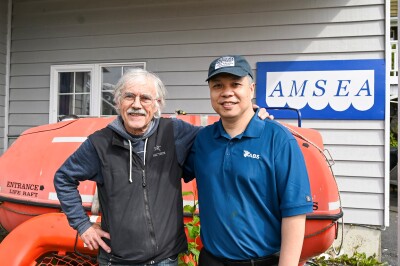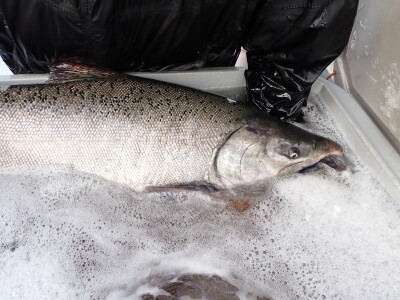Of all the ways in which Alaska's aviation and fishing industries have been associated over the years, the use of aircraft to spot fish for commercial fishing operators has by far been the most controversial.
Fish spotting is not unique to Alaska or even the West Coast; according to Aerial Age Weekly, it was used as early as 1920 off the coast of Virginia when "....each morning at 5 o'clock a flying boat carrying a pilot, radio operator and fish spotter leaves the station to aid fishing craft."
In Alaska, an early mention of the practice can be found in Pacific Fisherman, which carried a small note in 1940 under the headline "Plane Locates Fish For Petersburg Gillnetters." This "new use of airplanes" was organized by a local gillnetter and pilot to fly the "Stikine flats country" between Petersburg and Wrangell.
The jury was still out then as to how successful the experiment would be, and World War II interrupted any large-scale continuation of the practice -- at least temporarily.
By the 1950s, aerial photography of fish was becoming a valuable tool for the Fish and Wildlife Service, especially to spot salmon in Bristol Bay.
Pacific Fisherman recorded that post-war use of aircraft in this capacity was not to be considered casual flying, and required maintaining a constant altitude -- "generally between 600 and 800 feet" -- avoidance of glare and the precision counting of the observer who "counts ten individuals, mentally connects ten such groups to make a block of 100 fish, then divides the entire school into such blocks, tallying the individual hundreds on a hand-counter."
All the while, the pilot was holding the aircraft in a constant-rate turn to provide his passenger a steady view to assist the effort.
Read the full story in the Alaska Dispatch>>
Want to read more about spotter planes? Click here...






